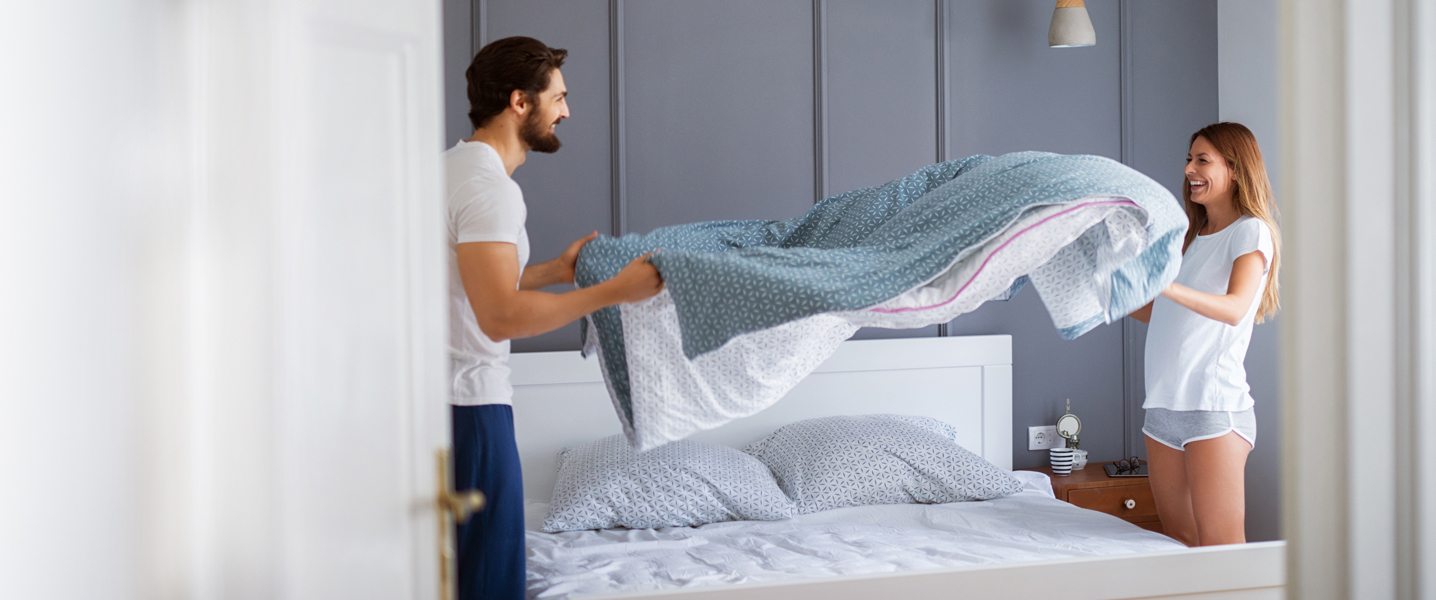Our beds are where we spend a large percentage of our time, and yet many of us don’t put too much thought into maximizing the level of comfort our sleeping arrangements can provide.
Sure, we may splurge on a comforter we love or a high thread count sheet set once in a while, but there’s another aspect to achieving optimal bed comfort that deserves more attention than it gets: microclimate.
In the same way that various factors can alter the climate of your home and make it more or less comfortable to live in, there are several different ways to affect your bedroom environment and make it more comfortable and therefore, easier to get a good night’s rest.
To help you do that, we’ve come up with some key steps to achieving the ideal microclimate in your bed.
Keep Things Cool
Don’t get us wrong: nobody wants to be cold when they sleep. Warm and cozy is ideal, but that’s only beneath the blankets. Outside of your bedding is a different story. Research tells us that somewhere around 60-65 degrees Fahrenheit is the ideal bedroom temperature for getting a good night’s rest.
Instead of opting for lighter blankets if you’re struggling to get good sleep, focus on cooling the room off, and you may find more success. This can be done by improving airflow, reducing humidity, or simply cracking a window.
Get Breathable Bedding
What feels warm and cozy before you drift off to sleep may become a burning hot torture chamber in the middle of the night as more and more body heat becomes trapped inside your bedding.
With breathable bedding, however, you give that excess body heat a chance to escape so that you can maintain a more comfortable temperature beneath the blankets. Sometimes getting the high-quality microclimate bedding you’re looking for will require a bigger investment. But remember how much time you spend in your bed and how invaluable a good night’s rest is to everything else you do in life and that investment may not seem very big at all.
Control Humidity
Pause for a moment and imagine jumping into a pool, then immediately leaving that pool, entering your bedroom, and climbing beneath the blankets. Did that give you the chills or even cause you to let out a blood-curdling scream? That’s because moisture and beds do not mix.
Sure, that example was extreme, but the point was to send the message home, and you don’t need to be soaked head to toe for moisture to affect your sleep.
If your room is humid or your bedding becomes even a little moist, your odds of hygienic sleep are slim to none. Combat this with a dehumidifier or a moisture-wicking mattress pad, and you’ll significantly increase your chances of getting good sleep every night.
